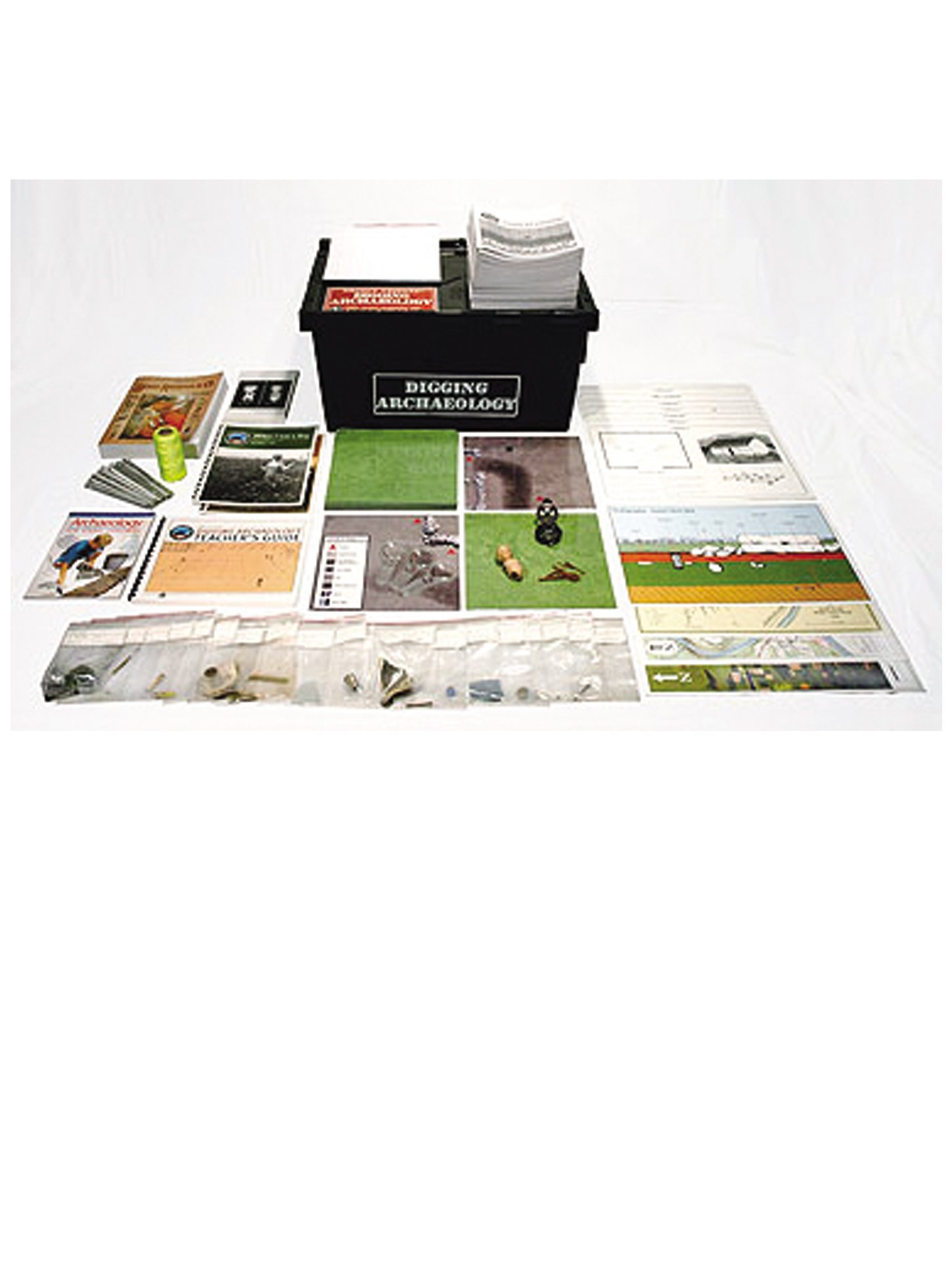 Image 1 of 2
Image 1 of 2

 Image 2 of 2
Image 2 of 2



Object Lessons: Digging Archaeology
Digging Archaeology engages students in a simulated dig based on an actual archaeological site. They examine artifacts and features found on the surface level and then “excavate” the site to discover what was there 100 years ago. Students make close observations of the available evidence, construct maps, collect and analyze data, formulate hypotheses, and arrive at conclusions based on the data. As the mystery unfolds, students are provided with resource materials to help them interpret the life and times associated with the site. These include historical maps, architectural drawings, a Sears catalogue, and a memoir of a young boy.
This 6 - 8 week unit is standards-based. Students experience learning on two closely related levels: they learn about the science of archaeology and at the same time they become more aware of the skills and processes involved in making archaeological discoveries.
Kit Contents:
1 Copy of Archaeology for Young
Explorers by Patricia Sandford and David L. Ribblet
1 Compass
1 Set of aluminum stakes and twine
1 “The Story of the Green Farm”– reproducible master
1 Set of maps and corresponding
transparencies
1 Set of found objects and 15 corresponding photocards
1 Simulated Dig – 24 10” x 10” two-sided squares
52 Artifacts in labeled plastic bags
1 Stratigraphy poster
1 Sears Catalogue of 1897
7 Architectural plans
1 “When I was a Boy” booklet
1 Set of student research cards
100 Sheets of 10” x 10” gridded paper
1 Set of 80 color paperclips
30 Student Journals
16 Hand lenses
1 Teacher’s Guide
Digging Archaeology engages students in a simulated dig based on an actual archaeological site. They examine artifacts and features found on the surface level and then “excavate” the site to discover what was there 100 years ago. Students make close observations of the available evidence, construct maps, collect and analyze data, formulate hypotheses, and arrive at conclusions based on the data. As the mystery unfolds, students are provided with resource materials to help them interpret the life and times associated with the site. These include historical maps, architectural drawings, a Sears catalogue, and a memoir of a young boy.
This 6 - 8 week unit is standards-based. Students experience learning on two closely related levels: they learn about the science of archaeology and at the same time they become more aware of the skills and processes involved in making archaeological discoveries.
Kit Contents:
1 Copy of Archaeology for Young
Explorers by Patricia Sandford and David L. Ribblet
1 Compass
1 Set of aluminum stakes and twine
1 “The Story of the Green Farm”– reproducible master
1 Set of maps and corresponding
transparencies
1 Set of found objects and 15 corresponding photocards
1 Simulated Dig – 24 10” x 10” two-sided squares
52 Artifacts in labeled plastic bags
1 Stratigraphy poster
1 Sears Catalogue of 1897
7 Architectural plans
1 “When I was a Boy” booklet
1 Set of student research cards
100 Sheets of 10” x 10” gridded paper
1 Set of 80 color paperclips
30 Student Journals
16 Hand lenses
1 Teacher’s Guide




